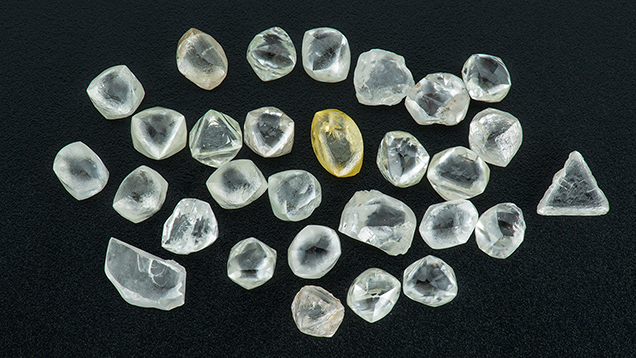De Beers Optimistic as Sales Revive; Luxury Houses Remain Cautious
February 21, 2017

De Beers issued a dose of optimism recently with its largest cycle (sight) in more than two years. Additionally, luxury sales have begun to rise again, albeit hesitantly, after a negative year.
The company’s January cycle totaled about $720 million and the Feb. 20-23 cycle is expected to be similar.
De Beers CEO Bruce Cleaver said demand for rough diamonds remained “healthy,” adding that the company would exercise caution if necessary, especially at the lower end of the market where Indian manufacturers are still trying to adjust to the demonetization of 500 and 1000 rupee notes (worth US $7.50 and $15 respectively) which hit some of the smaller firms that deal mainly in cash.
While rough demand remains firm, inventories of polished diamonds have been increasing as sales have not kept pace with production of new goods. This is creating concern that the trade may encounter difficulties in the second half of the year.
Alrosa, which mines and markets the majority of Russia’s diamond production, sold $358.2 million in rough diamonds at its January sale. The company expressed caution, especially for melee goods that have been affected by India’s demonetization.
The large luxury houses – including LVMH, which owns the majority of shares in De Beers’ retail operations, Italian jewelry brand Bulgari, and Fred Joallier − posted a 5% worldwide sales increase for the year, with an especially strong final quarter.
LVMH chairman Bernard Arnault warned against “irrational exuberance” as the company’s stock climbed about 10% in the final quarter, saying potential trade and currency wars and continued difficulties in Europe − coupled with the fact that the world is coming to the end of a 10-year growth cycle − could bring “difficult trading conditions” during the second half of the year. LVMH noted it would mount a strong marketing push to counteract this challenging economic and geopolitical environment in 2017.
Richemont, which owns Cartier and Van Cleef & Arpels, had an 8% sales increase in its jewelry division during the first fiscal quarter of 2017, after a 13% decline for fiscal 2016 that ended Sept. 30. While improved business in the Chinese mainland was one factor for the upturn, strong demand from upscale U.S. consumers also accounted for a significant portion of the increase.
Russell Shor is senior industry analyst at GIA in Carlsbad.



